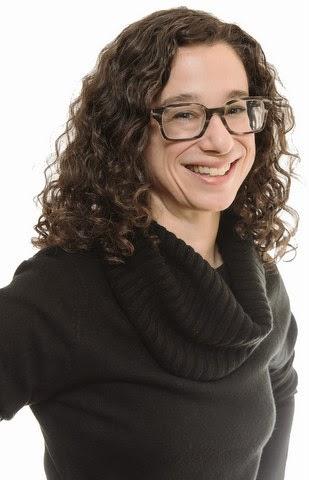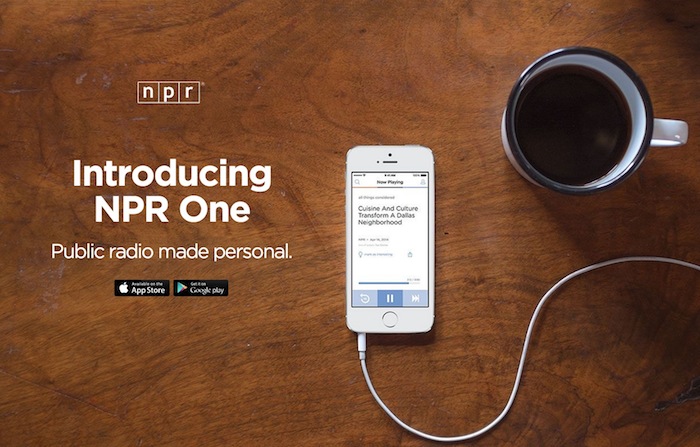
Tamar Charney has spent her career in public radio. For 19 years, she worked in various capacities at Michigan Radio in Ann Arbor, including reporter, producer, and editor before becoming its program director. In 2016, she joined NPR One, first as local editorial lead, and most recently, managing editor.
NPR One is a unique app that marries content from both NPR and local public radio stations into a platform that allows for skipping and “favoriting” stories and features. The app customizes content for the user, creating a personal public radio experience.
In 2015, we featured NPR One as of our “Radio’s Most Innovative” honorees.
The NPR One platform is data-rich, providing Tamar and her team with a unique opportunity to study what works – and what needs work – when it comes to feature stories, podcasts, and other audio content. In today’s “Guest List” (a version of a blog she wrote for NPR), Tamar provides us with insight about how to craft a podcast, from production to marketing. -FJ
As more and more people create podcasts, there’s a lot of competition for people’s ears. But, there’s a reason so many public radio producers are finding success in the podcasting space – we know how to tell a good story!
Platforms like NPR One also help provide clues and recommendations for how you can hook your potential podcast audience.
1. Start strong.
We can’t understate how important the start of a podcast is. NPR One’s Innovation Accountant Nick DePrey examined the data and found a typical podcast episode loses 20-35% of the listening audience in the first five minutes. The rate of the drop-off is higher in the first five minutes than any time until the credits roll. Listeners are making a decision to commit in those crucial opening moments. A mediocre episode with a good intro will almost always perform better than a great episode with a poor intro. Only established shows with loyal followings can overcome uninteresting or non-engaging beginnings. Read more about how great audio stories begin.
2. Re-engage your audience every 2 – 5 minutes.
Not only do the podcasts that work on NPR One start strong, they also use techniques to re-engage the audience every few minutes. When you are creating a radio piece, you can count on having a fairly constant number of people listening all throughout the piece even if it may not be the same people at the beginning of a story than the end. But, podcasts have their biggest audience at the beginning and smallest audience at the end. This means you have to set-up tension and keep forward momentum all throughout your podcast in order to keep as many listeners as possible, and you should not save your best or most important point for the end of a podcast.
Some of our evidence suggests that 18-30 minutes long in podcasts might be a sweet spot for holding the audience’s attention. Just because you can go as long as you want on a podcast, doesn’t mean you should.

3. Free yourself from your broadcast clock.
You’ve got a great radio show and so all you need to do is put up that hour broadcast as a podcast, right? Not so fast. We’re seeing radio shows get lots of followers, but not fare as well in the number of people who actually listen to a whole show. So take the material from your show and think about how you could use it to create a great podcast listen. Maybe your best show segment was later in the show. Or maybe you had a killer 18 minutes, but the rest, if you are honest with yourself, was filler. Rework your material to put your best foot forward knowing you don’t have to fill an hour nor hit that hard break at 20 past. Leave the rest on the cutting room floor.
4. Artwork and descriptions matter.
Unlike radio, your artwork and the language you use to describe your podcast are both important to your success. Your podcast artwork has to draw people in.
The podcast’s description has to function like a headline that makes someone click to listen. We’ve seen great podcast episodes fail to do well because the title and description didn’t entice people to give the episode a chance. Read more about headline tips to help you write titles and descriptions.

5. Think about your audience & how you will find them.
When it comes to producing station podcasts, it helps to have thought very intentionally about your audience and to have considered how to reach that audience.
Is your podcast geared generally to a national audience such as station podcasts like Death, Sex, and Money or Modern Love? Or is it a local story for your local audience? A third possibility might be that you have a local story that is actually relevant to people elsewhere. For instance, the topic your podcast is exploring in your community might be relevant elsewhere or perhaps, there are people who live in other places that are still connected to your community.
The producers of St Louis Public Radio’s We Live Here and Milwaukee Public Radio’s Precious Lives were telling stories set in their community about issues facing people in the area, but these were stories that spoke to much larger issues experienced in many communities throughout the United States. We’ve also seen stations find success with podcasts that build on inherent interest in their community such as WWNO’s Katrina: The Debris and WBEZ’s Curious City.
Both of these approaches allow stations to create a podcast that is on one hand local, but is also able to reach an audience size that has sponsorship revenue potential.
Podcasts are a growing way to reach new listeners both inside and outside your terrestrial broadcast signal. They are a great place to try out new ideas and let new talent show what they can do. These tips can help you make the most of your podcasts.
Jacobs Media will be hosting a conference tract “Broadcasters Meet Podcasters” – at this summer’s Podcast Movement conference in Anaheim on August 23-25. Information here.
More Guest Lists
- Jeff Smulyan: 5 Things Every Radio Professional Should Know About NextRadio
- Kevin Gunn: 5 Tips for Writing Great Radio Commercial Copy
- Sean Pollock: 5 Things About Millennials Every Radio Broadcaster (and Sales Team) Should Know
- 5 Things We Hope to Learn About Our Podcast From a Focus Group
- BTWs With Richard Sands
- How AI Can Give Radio Personalities More…PERSONALITY - April 23, 2025
- Can Radio Afford To Miss The Short Videos Boat? - April 22, 2025
- Media And Technology In 2025: Believe It Or Not! - April 18, 2025





Leave a Reply